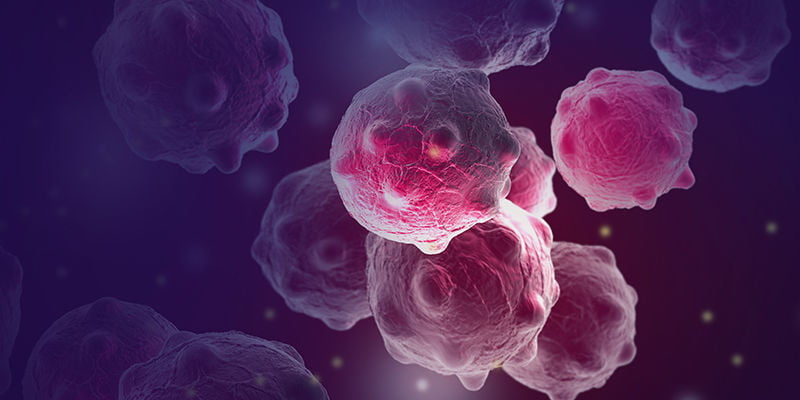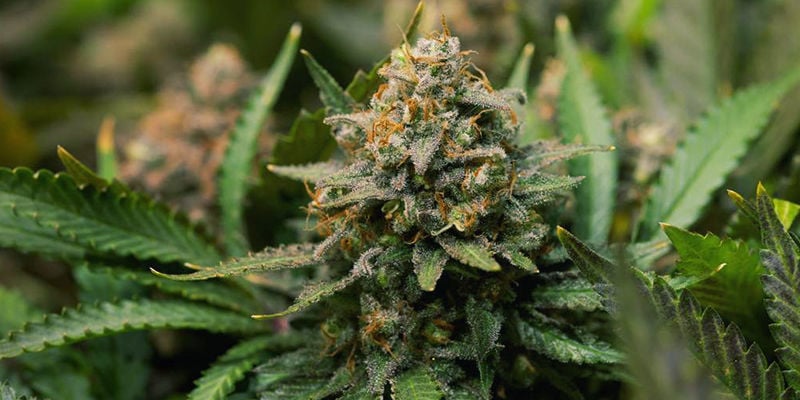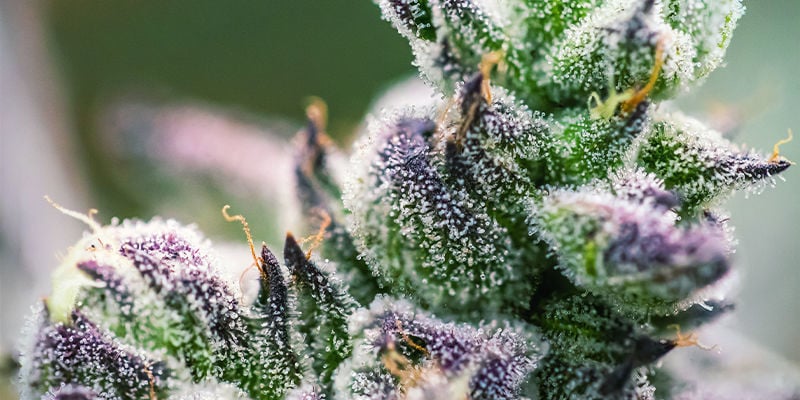
What Is Geraniol In Cannabis?
Geraniol occurs throughout nature, and gives off aromatic, floral scents. Found in many strains of cannabis, does it only taste good, or could it have other beneficial properties? Here we investigate this compelling terpene.
Cannabis, and the wider natural world, is full of terpenes. Terpenes are molecules found in aromatic oils, and responsible for many of nature’s diverse aromas. There are many, many terpenes out there, and a large share of them experience use in all sorts of industries. Furthermore, some are thought to have potential clinical uses, alongside smelling good.
In this article, we look into geraniol, a terpene found in many strains of cannabis.
What is geraniol?

Geraniol is a naturally occurring monoterpene with the chemical formula C₁₀H₁₈O. It is produced in plants (and some animals) such as geraniums (hence the name), lemongrass, and, of course, cannabis.
Though each strain of cannabis contains a unique mix of terpenes, cannabis as a species appears to produce over 200 different terpenes. It is this variety that explains the vast array of different flavours and aromas that cannabis can exhibit. But terpenes don’t just contribute to taste and smell. Though poorly understood, it appears that at least some terpenes (geraniol included) may be able to affect the brain in subtle ways. Working in combination with the cannabinoids found in the cannabis plant, terpenes could have a fairly powerful influence.
Where can you find geraniol?

Geraniums are not the only place that geraniol can be found. In fact, it is most commonly found in rose oil, palmarosa oil, and citronella oil. Moreover, bees are known to produce geraniol, and use it to mark the borders of their territories, preventing other colonies of bees from attempting to set up shop within their homes.
And in the world of products, geraniol can be found all over the place too—most notably in the cosmetics industry. Perfume, moisturisers, lip balms, shampoos, conditioners, soaps, and detergents may all contain geraniol due to its floral, fragrant qualities. It is also a very common ingredient in insect repellents.
Of course, you can also find geraniol in certain strains of cannabis (more info below).
The aroma of geraniol

So, what does geraniol actually smell like? It’s sweet and floral—as you might imagine from something that occurs in flowers and used as a perfume agent—but it also has subtle citrus undertones, giving it a little complexity and freshness.
Nevertheless, geraniol is not the terpene responsible for giving cannabis its classic citric flavours. Limonene is the terp to thank for this.
Potential benefits of geraniol

But geraniol doesn’t just smell good. Though not proven, there is some research investigating whether geraniol may have qualities that could be used for therapeutic purposes. Research is still in its infancy, and even if certain results seem compelling, that doesn’t mean that reaching for a geraniol-rich strain of cannabis will yield the same results. With that said, let’s explore some of the available research.
Cancer cells
One study sought to identify if geraniol may be able to modulate the production of cells in cases of breast cancer (Duncan, Lau, El-Sohemy and Archer, 2004). The findings were then replicated in a study related to prostate cancer (Lee et al. 2016). This study observed that geraniol appeared to down-regulate E2F8 expression; however, E2F8 is not definitely linked to cancer production, and so it is not possible to draw distinct conclusions from this.
A large review observes the potential “antitumor effects” of geraniol in different types of cancers, “such as breast, lung, colon, prostate, pancreatic, and hepatic cancer…” (Cho, So, Chun and Jeon, 2016). Although findings are worthy of future study on the subject, exactly how geraniol could be put to clinical use in this context is yet unclear.
Neuroprotection
Geraniol may be able to assist in the protection of neurons. A 2021 study on male Wistar rats exposed them to zinc oxide poisoning (Farokhcheh et al. 2021). Zinc oxide is known to be detrimental to brains, and can cause cognitive and memory impairment. The study concluded that geraniol may be able to partially reverse the impairment caused by zinc oxide, implying potential neuroprotective mechanisms.
Another rat study found geraniol to reduce oxidative markers in the brains of diabetic rats, thereby improving cognitive function (Prasad, Muralidhara, 2014). The rats also showed signs of improvement in motor function and sensitivity. Researchers concluded that further study into geraniol in relation to neuroprotective properties should be conducted.
Cannabis strains that contain geraniol

As stated, smoking weed that contains geraniol is unlikely to have discernible pharmacological effects, but it definitely tastes good. It’s likely you’ve smoked it before without realising, but here are some strains of cannabis that are rich in geraniol, if you fancy giving it a try.
Geraniol: an enticing terpene

By now, you may be quite intrigued by this little molecule. Found throughout nature, delicious, and potentially beneficial, it’s likely we’ll be hearing much more about geraniol as time goes on. For now, why not try some cannabis cultivars that boast high geraniol concentrations, and see which combination of flavours you most prefer?
- Cho M, So I, Chun JN, & Jeon JH. (2016 May). The antitumor effects of geraniol: Modulation of cancer hallmark pathways (Review). International Journal Of Oncology, 48(5), 1772-1782. - https://pubmed.ncbi.nlm.nih.gov
- Duncan, R. E., Lau, D., El-Sohemy, A., & Archer, M. C. (2004/11/01). Geraniol and beta-ionone inhibit proliferation, cell cycle progression, and cyclin-dependent kinase 2 activity in MCF-7 breast cancer cells independent of effects on HMG-CoA reductase activity. Biochemical pharmacology, 68(9), 1739–1747. - https://www.sciencedirect.com
- Farokhcheh, M., Hejazian, L., Akbarnejad, Z., Pourabdolhossein, F., Hosseini, S. M., Mehraei, T. M., & Soltanpour, N. (2021/10/01). Geraniol improved memory impairment and neurotoxicity induced by zinc oxide nanoparticles in male wistar rats through its antioxidant effect. Life sciences, 282, 119823. - https://www.sciencedirect.com
- Lee, S., Park, Y. R., Kim, S. H., Park, E. J., Kang, M. J., So, I., Chun, J. N., & Jeon, J. H. (2016). Geraniol suppresses prostate cancer growth through down-regulation of E2F8. Cancer medicine, 5(10), 2899–2908. - https://onlinelibrary.wiley.com
- Prasad, S., & Muralidhara. (2014). Protective effects of geraniol (a monoterpene) in a diabetic neuropathy rat model: Attenuation of behavioral impairments and biochemical perturbations. Journal Of Neuroscience Research, 92(9), 1205-1216. - https://onlinelibrary.wiley.com
-
 6 min
19 May 2025
Top 3 cannabis strains by terpenes
Love the musky aroma and heavy hit of myrcene, or do you prefer the refreshing, uplifting energy blast of limonene? Whatever your favourite terps, find the strains with the most myrcene, limonene,...
6 min
19 May 2025
Top 3 cannabis strains by terpenes
Love the musky aroma and heavy hit of myrcene, or do you prefer the refreshing, uplifting energy blast of limonene? Whatever your favourite terps, find the strains with the most myrcene, limonene,...
-
 7 min
15 February 2022
What Is The Endocannabinoid System?
The endocannabinoid system is a fascinating network of channels and receptors that spans the length and breadth of the human body. Involved in everything from cognition and learning to appetite and...
7 min
15 February 2022
What Is The Endocannabinoid System?
The endocannabinoid system is a fascinating network of channels and receptors that spans the length and breadth of the human body. Involved in everything from cognition and learning to appetite and...
-
 5 min
22 January 2021
What Are Flavonoids, Terpenes, And Terpenoids?
Cannabis flowers appear simple to the naked eye. Yet, these sticky green nuggets house a secret, complex world. Not only do they contain over 100 cannabinoids, but they manufacture hundreds of...
5 min
22 January 2021
What Are Flavonoids, Terpenes, And Terpenoids?
Cannabis flowers appear simple to the naked eye. Yet, these sticky green nuggets house a secret, complex world. Not only do they contain over 100 cannabinoids, but they manufacture hundreds of...
-
 3 min
11 September 2019
How To Add Flavour To Your Weed Before And After Harvest
Although good cannabis will already taste great, there are some things that you can do to get the most flavour out of your weed. Here is how to maximise flavour during growth, as well as some tips...
3 min
11 September 2019
How To Add Flavour To Your Weed Before And After Harvest
Although good cannabis will already taste great, there are some things that you can do to get the most flavour out of your weed. Here is how to maximise flavour during growth, as well as some tips...









 United States
United States













